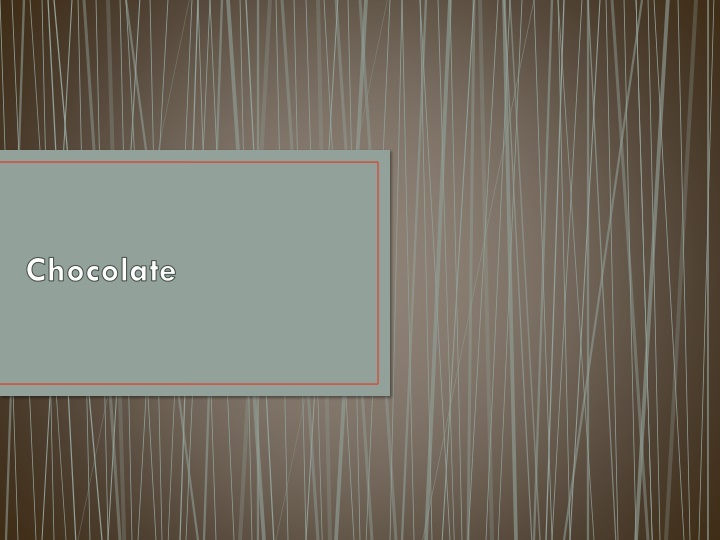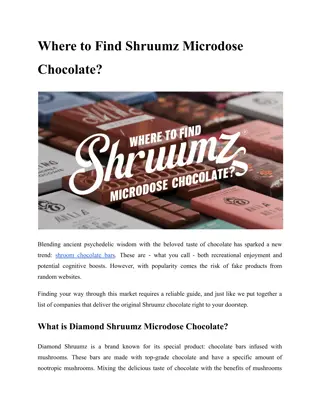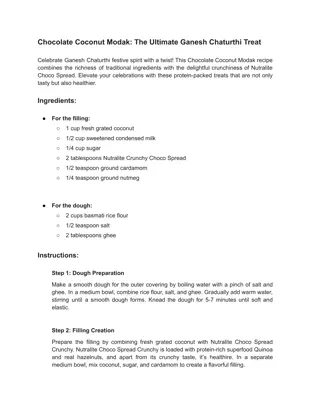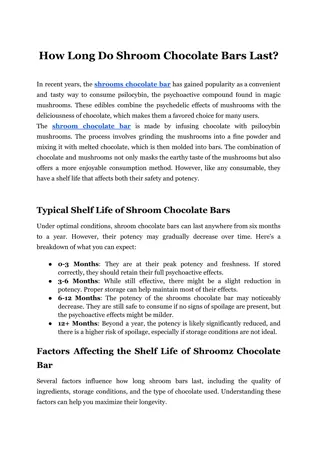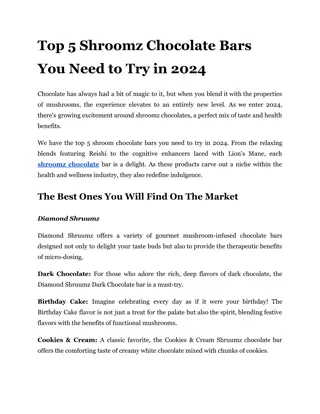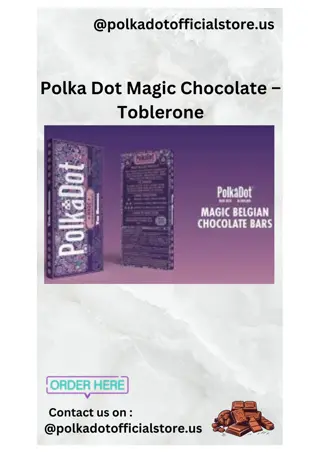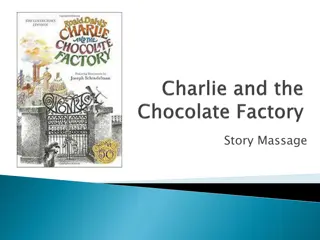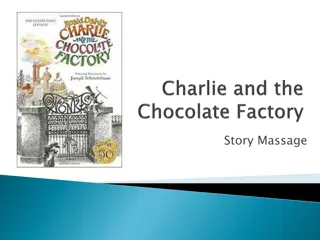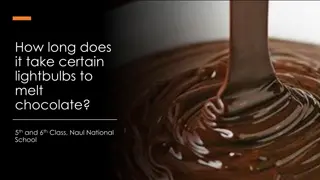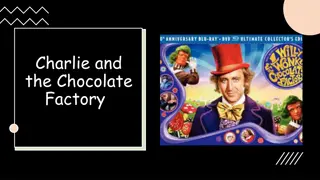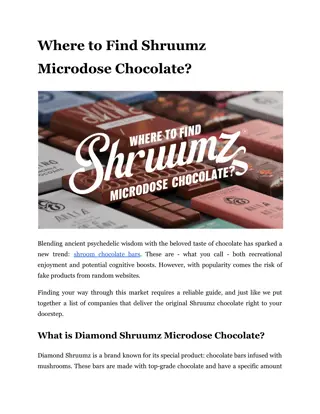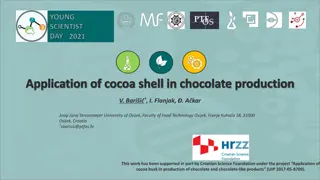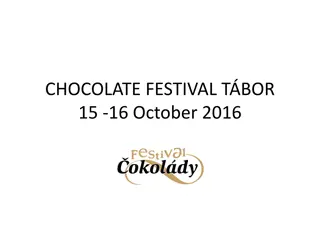The Fascinating Journey of Chocolate: From Divine Food to Tempering Techniques
Explore the rich history and intricate preparation process of chocolate, from the Mayans' divine beliefs to the modern art of tempering. Learn about different types of chocolate, tasting tips, proper storage methods, and the importance of tempering for a perfect finish.
Download Presentation

Please find below an Image/Link to download the presentation.
The content on the website is provided AS IS for your information and personal use only. It may not be sold, licensed, or shared on other websites without obtaining consent from the author.If you encounter any issues during the download, it is possible that the publisher has removed the file from their server.
You are allowed to download the files provided on this website for personal or commercial use, subject to the condition that they are used lawfully. All files are the property of their respective owners.
The content on the website is provided AS IS for your information and personal use only. It may not be sold, licensed, or shared on other websites without obtaining consent from the author.
E N D
Presentation Transcript
Chocolate History Mayans believed it was a divine food from the gods. French thought it to be a dangerous drug Love, romance
Chocolate preparation Comes from cocoa beans from cacao trees. Roast cocoa beans dry fermentation
Continued Loosen outer shell and crack bean shown: shells, used in gardens Beans are broken into small pieces called nibs
Continued Crushed into paste completely unsweetened, called chocolate liquour Pressed to separate the liquid from the solid. Liquid is cocoa butter. This can be combined with chocolate liquour to make eating chocolate.
Types of Chocolate Type Description Form Unsweetened Chocolate 90% chocolate liquor, 5% cocoa butter, maybe 5% sugar Blocks or bars Semi-sweet Chocolate Solid chocolate about 45% chocolate liquor, 15% cocoa butter and 40% sugar Blocks, bars, chunks & chips Milk Chocolate chocolate liquor, cocoa butter, sugar, and some type of milk Blocks or bars, chunks & chips White Chocolate Sweetened cocoa butter Blocks or bars, chunks & chips Cocoa Only 10-25% of cocoa butter remains Powdered Dutch Cocoa Cocoa powder treated with alkali to reduce acidity Powdered
Tasting Chocolate Cleanse your palate Chocolate needs to be room temperature Allow the chocolate to dissolve in your mouth don t bite or chew Describe what you taste at the beginning, during and after
Storage Cool, dry place. Wrap carefully Refrigeration causes moisture to condense. May need to refrigerate in hot humid weather. Bloom cocoa butter has melted and recrystallized on the surface. No change in flavor, but looks funny. Should keep several months.
Tempering Chocolate Why? So it will harden evenly and have a good shine Can be purchased already tempered How? Finely chop 1 pound of chocolate. Combine of the chocolate and 2 tsp. shortening in a heat proof bowl set over a pan of simmering water. Don t let the water near the chocolate. Melt the chocolate to 105 degrees, stirring. Place the bowl in a larger bowl of cold water, stir in the remaining chocolate until melted. The temperature should drop to 87 degrees. Place back over simmering water. Heat back to 92 over hot water. Re-heat to 92 if it gets too thick.
Chocolate uses Sauces or icing (Ganache) Dipping Piping - garnish
